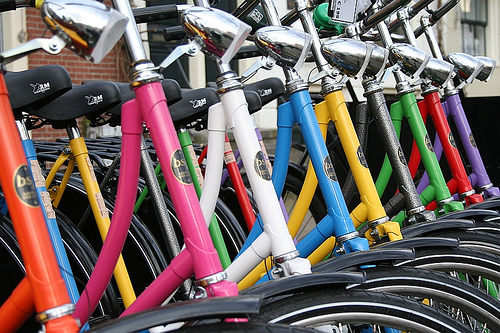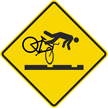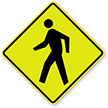Oregon DOT lays down bike traffic signals best practices
Last month, the Oregon Department of Transportation and the Federal Highway Administration released guidance for bike traffic signals in the U.S. in an extensive report titled “Operational Guidance for Bicycle-Specific Traffic Signals in the United States,” and prepared with the aid of the Portland State University Department of Civil and Environmental Engineering.

Courtesy the excellent Rupert Ganzer.
The researchers’ objectives were simple: to analyze “engineering guidelines for the design of bike-specific traffic signals, and, secondly, to “develop operational guidelines for timing and phasing of bicycle-specific traffic signals or modifications that can be made to existing signals to better accommodate bicycles.”
The extensive report addresses in detail a range of bike traffic issues and safety concerns specific to bike traffic in Portland, but with valuable implications for bikers — and lawmakers — throughout the States. It also provides an analysis of cyclists’ biking behaviors, helmet usage, compliance with traffic laws, and other factors which contribute to traffic issues. The research was two-pronged, consisting of first, “a synthesis of practice,” and second, an “analysis of cyclist performance characteristics.”
In the synthesis phase, the researchers studied literature, current engineering design and operational guidance documents, and surveyed the jurisdictions about their current deployments of bicycle-specific signals,” with especial attention to information available to engineers and planners, as well as to the types of designs used in jurisdictions with bicycle-specific signals.
Researchers collated data on bike traffic signals compliance and reaction time
During the analysis phase, the researchers collected and analyzed video data of cyclist behavior at a collection of nine “signalized intersections” throughout Portland; the information gathered was used to analyze 1) performance, including accelerations, cruising speeds and reaction time; 2) queue discharge; and 3) compliance.
The need for a closer look at bike-specific traffic guidelines springs from biking’s increasing popularity throughout the country. Car congestion and pollution have also been encouraging communities to devote more funding to bike-specific infrastructure. European countries and certain U.S. cities have already adopted bike-specific traffic signals; however, there is no official guideline on placement, phasing, timing, design or warrants for bike signal use, making for increased liability — and a pressing need for bike-specific traffic signal standardization.
Of particular interest in the report is a new distinction between “Experienced/Confident Riders” and “Casual/Less Confident Riders,” which each have different habits. For instance, Experienced/Confident Riders avoid riding on sidewalks, prefer a more direct route, and “Most are comfortable riding with vehicles on streets and are able to navigate streets like a motor vehicle, including using the full width of a narrow travel lane when appropriate and using left-turn lanes.”
Casual/Less Confident Riders, on the other hand, “prefer shared use paths, bicycle boulevards or bike lanes along low-volume, low-speed streets,” may use less direct routes to avoid heavy traffic, and may ride on sidewalks, among other characteristics. These two types of cyclists often ride at different speeds — experienced riders tend to ride up to 25 mph on level surfaces and up to 45 mph on steep descents; casual riders ride at speeds between 8 to 12 mph– for the casual riders — which, the report explains, has an impact on bike traffic and safety.
Yet there’s much more to explore here: The extensive report is chock-full of guidelines, recommendations and research-backed studies that engineers, city planners and urbanists alike will appreciate, including illustrative case studies hailing from Montreal, Canada,Washington DC, and San Francisco, CA; images of current bike infrastructure and signage (as well as their associated problems); and signal timing discussions.
Category: Road safety



















